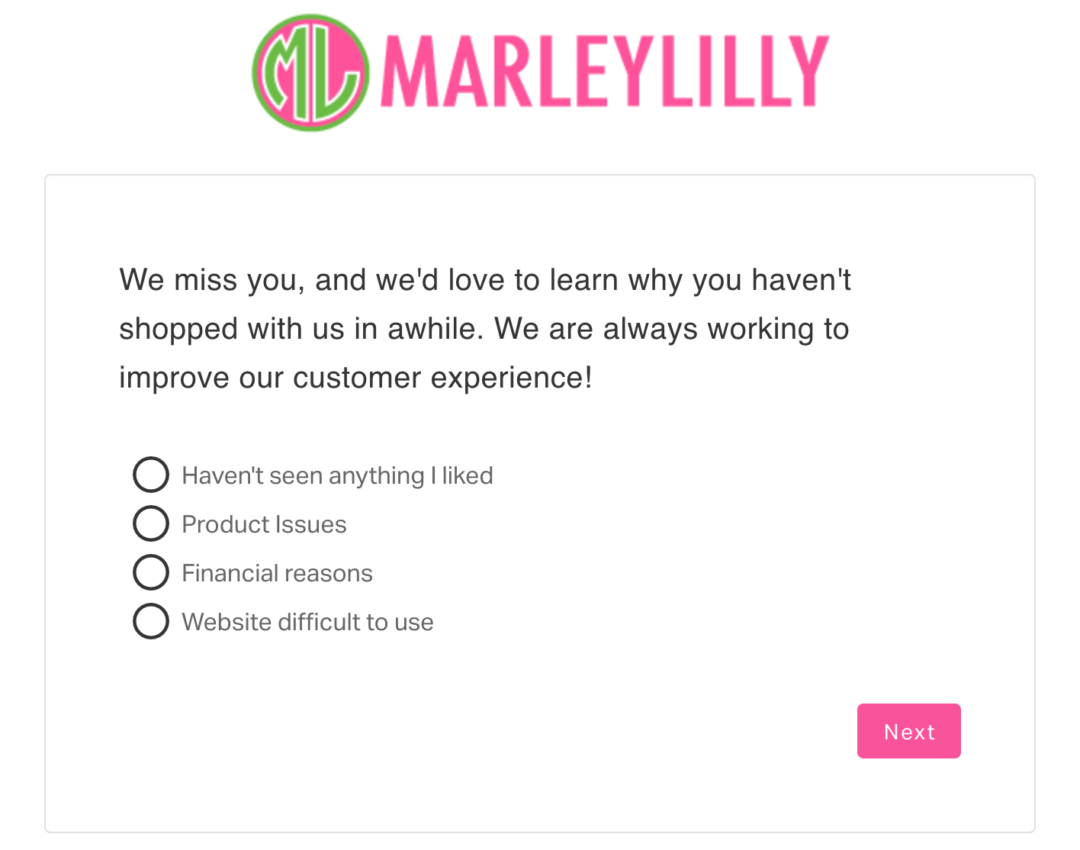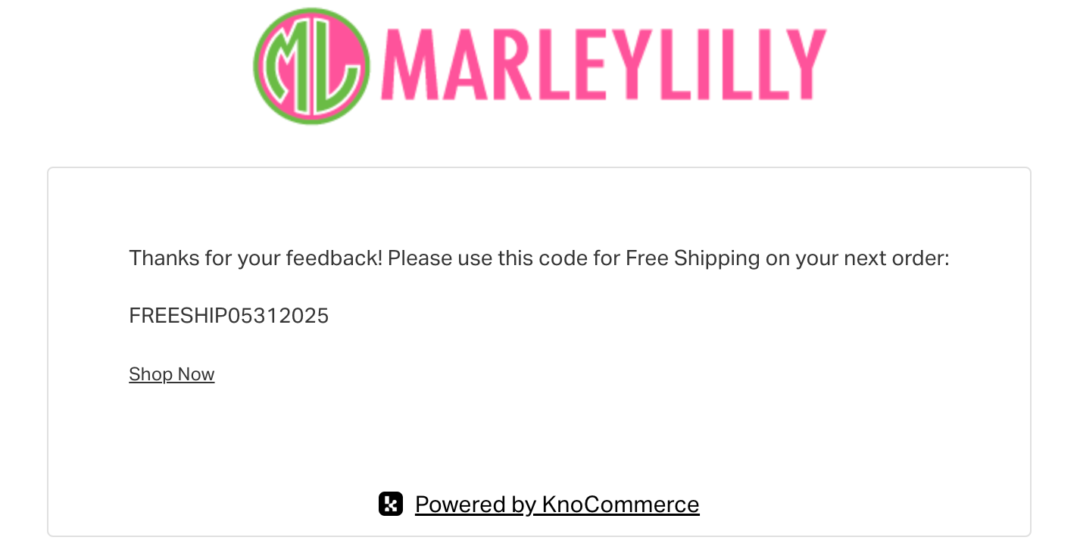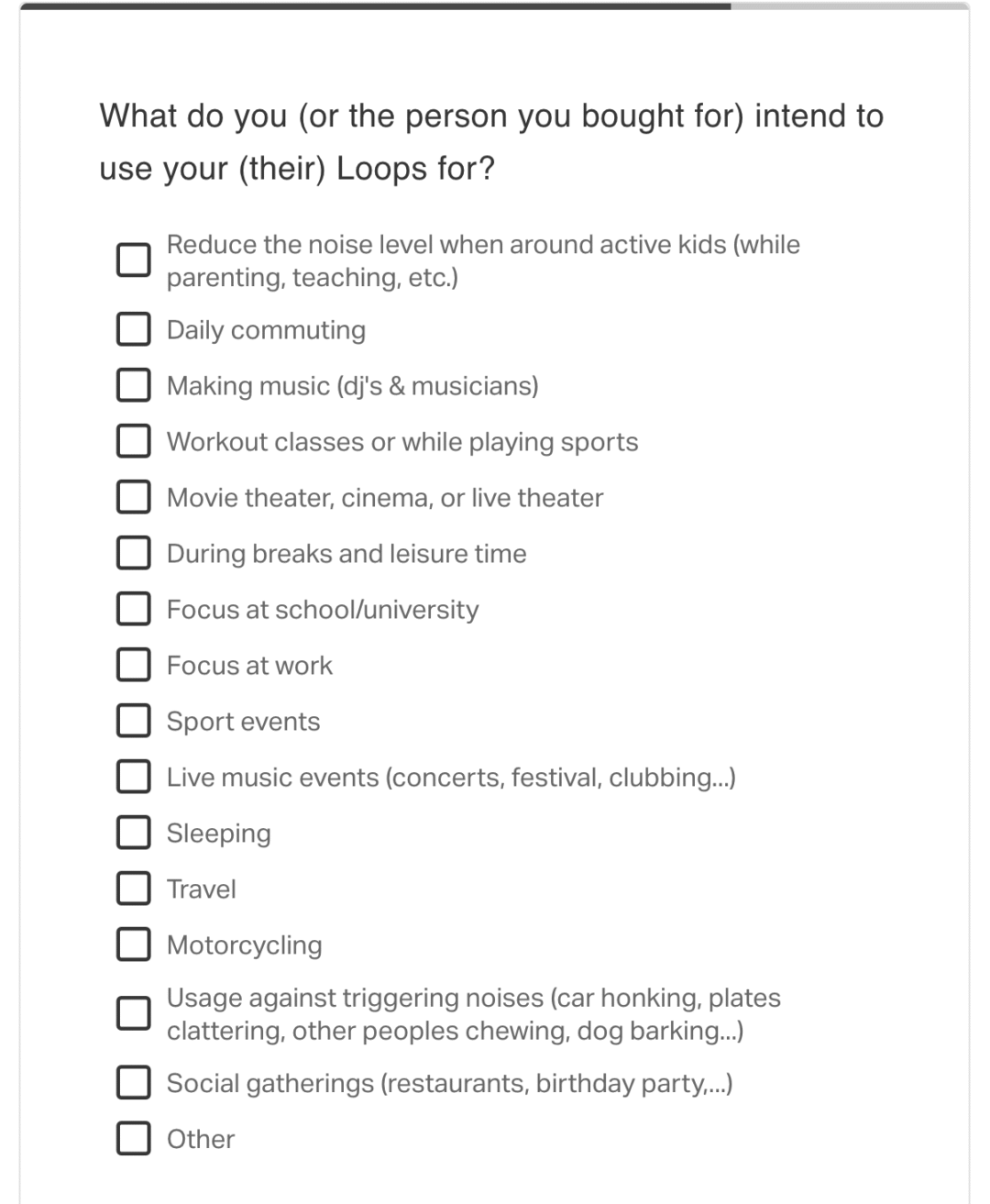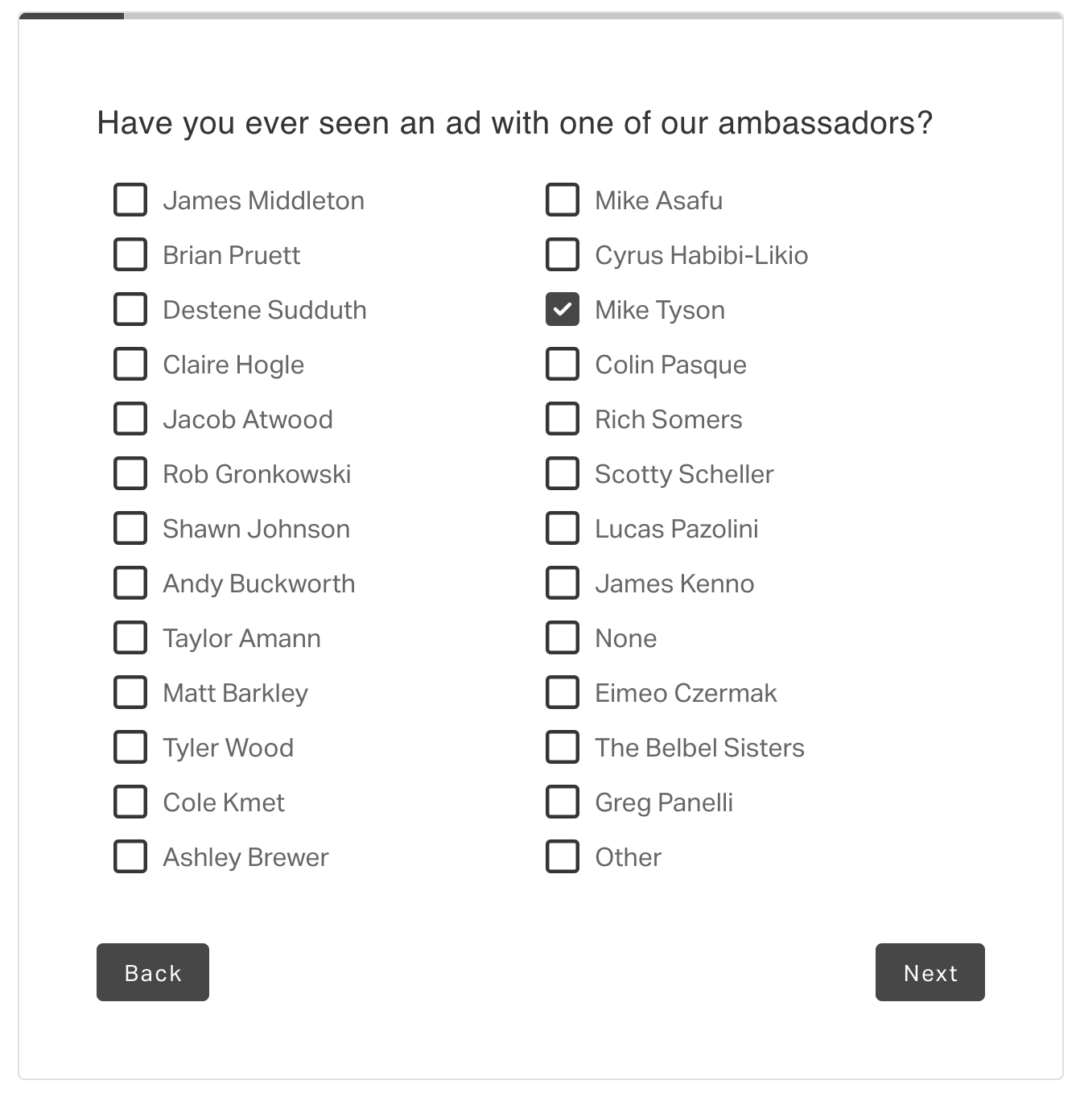
An abandoned cart isn’t a dead end. It’s a chance to learn exactly what’s stopping your customers from completing their purchase—and fix it.
The best way to uncover those hidden friction points? Ask.
Abandoned cart surveys give you direct insights into why shoppers drop off, from pricing concerns to shipping costs to checkout frustrations. Instead of guessing (and potentially fixing the wrong problem), you can address real issues, recover more sales, and improve your customer experience long term.
In this guide, we’ll break down 11 types of cart abandonment survey questions that help you get to the root of the problem.
Intent-based questions
Sometimes online shoppers aren’t ready to buy—plain and simple. With these customers, you still have a high chance of converting their abandoned cart into a purchase (and hopefully a repeat purchase).
The key is identifying those customers and providing them valuable follow-up resources like product tutorials, in-depth benefit explanations, or recipes.
These questions help you understand whether the shopper ever intended to purchase:
- Were you planning to buy today or just browsing?
- What were you hoping to find that you didn’t?
- Was there something missing that would’ve helped you make a decision?
- What’s holding you back from checking out?
Laura Gellar Beauty asks product innovation questions in its post-purchase survey that would also be great in a cart abandonment survey. If a customer shows interest in a book of makeup tips for mature women, it indicates that they’re still interested in your brand. You can then provide value-added messaging around this topic via email and SMS to encourage a future purchase.

Price-related questions
One of the main reasons customers abandon their carts is extra costs—47% of customers don’t proceed with their purchase because of extra shipping, duties, or taxes. Asking specific questions about your pricing strategy can help you pinpoint which factor is deterring customers so you can adjust and capture more sales.
To identify pricing or value perception issues, include questions like:
- Was the price higher than you expected?
- Were there any hidden fees or unexpected charges in the purchasing process?
- Did you find the same product for less somewhere else?
- Would you be interested in a payment plan or financing option?
- Is our pricing too high, too low, or just right?
Incentive-based questions
Similar to pricing concerns, some shoppers expect a discount or promotion on their order. Rather than guessing and cutting into your profit margins by offering steep discounts for every abandoned cart, ask your customers what type of incentive they’d value most.
Ask incentive-based survey questions like:
- Would a discount or promo make you more likely to complete your order?
- Were you waiting for a sale or better offer?
- Would earning loyalty points, rewards, or cashback have encouraged you to complete your purchase?
- Did you have difficulty applying a discount or promo code?
- Which type of promotion would be most compelling to you? For instance, percentage off, free shipping, buy-one-get-one, gift with purchase, etc…
Take this example from Marleylilly, a personalization brand specializing in monogrammed apparel, accessories, jewelry, and home goods. As part of a win-back campaign, they reach out to dormant customers and ask why they haven’t shopped from them in a while.

This is a great strategy for cart abandonment surveys, too. For example, if a customer indicates that they didn’t purchase due to financial reasons, you can offer them a personalized promotion like Marleylilly does with this free shipping coupon.

Shipping questions
In the age of same-day and next-day delivery, fast delivery is essential. As of 2024, two-thirds of customers expect to receive their orders within 24 hours. While this may not be realistic for every order, understanding customer expectations can help you better communicate your shipping policies throughout the customer journey so they’re not surprised at checkout.
It’s best to ask customers if there was a specific aspect of the shipping experience that caused them to abandon their cart. Once you know the deterrent, you can optimize your fulfilment and shipping processes to help reduce future abandonments.
Here are some helpful questions to spot logistical blockers:
- Were shipping costs or delivery times an issue?
- Were you surprised by the shipping costs at checkout?
- Was the total cost clear during checkout?
Product-related questions
Just like shopping in-store, the online cart can become a temporary storage locker for any products the customer is slightly interested in. As they navigate through your site, they may add other products that better fit their needs and then sort through what they actually want to buy at the checkout.
But let’s say a customer adds a black t-shirt to their cart, when what they really want is a grey t-shirt. If they can’t find the color they’re looking for, they may either settle for their second choice or, more likely, abandon their cart and head to another store.
That’s why it’s a good idea to ask questions about your products in your cart abandonment surveys. If you know what features or product attributes your customer wants, you can pass that feedback along to your product development team.
Ask product-based questions like:
- Was there a specific feature you were looking for that [the product] didn’t have?
- Were you considering a similar product from another brand? If so, what made it stand out to you?
- Were you looking for different options (e.g., size, color, style) that weren’t available?
- Did you feel like you had enough information about the product’s features to make a confident decision?
- Did you have any doubts about the quality or durability of the product?
It’s also a great idea to ask how customers intend to use your product in their day-to-day life. For example, Loop Earplugs includes a question in their post-purchase survey about how customers intend to use their earplugs.

If you know what customers plan to do with your products before they even buy them, you can enter them into a segment specific to their use case. You can then use an email or SMS marketing tool like Klaviyo to send them nurture follow-up messages that move them closer to a purchase.
Checkout experience questions
Once a customer makes it to the checkout page, it’s your job to make it as easy as possible for them to complete their purchase. So when a customer abandons their cart at checkout, it’s best to find out if it was something to do with the experience on that page.
17% of customers abandon their cart if the checkout process is too complicated. Frustrating customers at this stage is leaving money on the table.
Ask questions about your checkout experience so you can use data-based insights to optimize it. For example:
- Did anything about the checkout process feel confusing or frustrating?
- Did you experience any errors or bugs while checking out?
- Was there a payment method you needed that we didn’t offer?
Device and experience-related questions
Shoppers behave differently depending on what type of device they’re using. For example, mobile cart abandonment is highest at 75.5%. You should aim to optimize your experience to be responsive to any device a customer may be using.
To help diagnose technical or UX issues, ask questions like:
- Were you shopping on a phone, tablet, or computer?
- Did the page load too slowly or glitch during checkout?
- Was the product information clear and helpful?
- Was anything hard to click, navigate, or understand?
If you notice that most abandonments were from mobile shoppers, you can review your mobile UX and optimize it for conversions.
Social proof and reviews questions
Customers trust other customers. That’s why not showing enough social proof or customer reviews may lead customers to question the product’s credibility and abandon their purchase.
A study by Yotpo found that displaying user-generated content on product pages can increase conversion rates by up to 166% and decrease cart abandonment rates by up to 2.5%.
Ask social proof and review-based questions like:
- How important are star ratings or review scores when deciding to buy?
- Would customer reviews or more product photos have helped you make a decision?
- Would influencer endorsements help you feel more confident in your purchase?
- Did the product’s rating influence your decision not to purchase today?
- Would seeing more customer photos or videos help you feel more confident about purchasing?
The impact of social proof also extends to social media and influencer marketing. BYLT Basics, a premium men’s athletic apparel brand, asks shoppers if they’ve ever seen an ad from any of their ambassadors.

Asking a question like this in your cart-abandonment survey can help determine what audience segment to place that shopper in for follow-up communication. For instance, if they have seen ads with a lot of golf professionals, you can send personalized messaging about your line of golf gear and clothing to move them closer to a purchase.
Return-policy related questions
Online shopping inherently has more risk than shopping IRL. You can’t touch or see the product in person before buying. That’s why most ecommerce shoppers expect a generous return or exchange policy. 18% of customers said that “unsatisfactory return policies” were the reason they abandoned their cart.
Here are some return-policy related questions to ask to understand if you’re return policy needs a refresh:
- Was our return policy clear and easy to understand?
- Were you able to find our return policy on our website?
- Did our return policy influence your decision not to complete your purchase?
- Would a free or extended return policy make you more likely to complete your purchase?
- Do you feel confident that returning a product would be quick and hassle-free?
Account creation questions
Online shopping is meant to be quick, easy, and convenient. Forcing customers to create an account before they check out is an annoying extra step that 24% of shoppers said drives them away altogether.
Ask questions in your cart abandonment survey like:
- Did creating an account feel like it would take too much time or effort?
- What would make creating an account worth it for you? For example, faster checkout, order tracking, exclusive offers, save preferences, etc…
- Did needing to create an account stop you from completing your purchase?
- Would you have preferred a guest checkout option?
Open-ended feedback prompts
Open-ended questions are valuable because they uncover unfiltered, qualitative insights straight from your customers. In terms of cart abandonment, you identify unexpected friction points in the customer’s own words, and you can then prioritize improvements based on real user experiences.
To get qualitative insights, include a few questions like:
- What would’ve made you more confident to buy?
- Do you have any suggestions to improve your experience?
- What’s one thing we could do better?
Ahead of BFCM, drinkware brand BrüMate ran a survey asking its existing customers questions like:
- When do you plan to start your holiday shopping?
- How much do you plan to spend per gift?
- What would discourage you from buying from us?
By asking what might hold customers back from shopping, they gained valuable insights that they could apply to their seasonal promotional strategy before the busiest time of the year.
For more inspiration, check out our list of post-purchase survey questions—a comprehensive collection of 200+ questions used by top ecommerce brands.
Start asking the right questions with KnoCommerce
An abandoned cart isn’t the end of the road. You just have to ask the right questions, understand how to capture the money left on the table, and turn it into actions.
Want even more examples to get you started? Check out our Post-Purchase Survey Question Bank for 200+ questions, broken down by vertical, audience, purpose, and more.